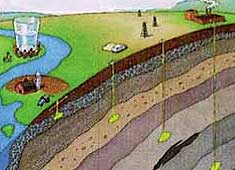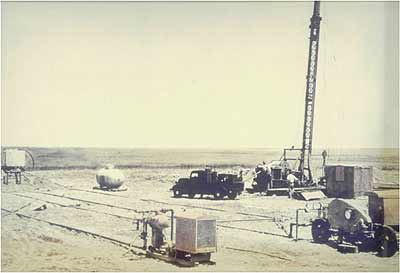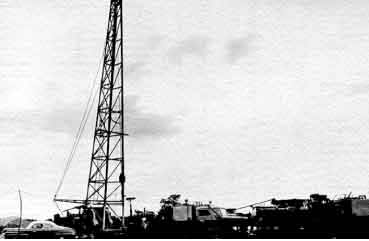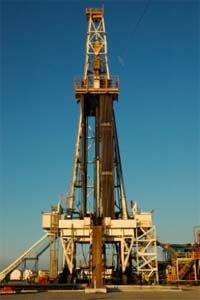Biblio
Summary Points:
EPA’s central authority to protect drinking water is drawn from the Safe Drinking Water Act (SDWA).
The SDWA requires EPA to set legal limits on the levels of certain contaminants in drinking water.
The Safe Drinking Water Act (SDWA) also requires EPA to protect underground sources of drinking water (USDWs) from contamination caused by underground injection.
-
§1421 provides minimum standards for underground injection.
-
§1422 provides for state primary enforcement authority.
-
§1425 provides for alternative showing of effectiveness of program by state Underground Injection Control (UIC) Programs (Oil and Gas wells only).
-
§1431 contains provisions to address imminent and substantial endangerment.
Activities not regulated under Safe Drinking Water Act (SDWA) Provisions for UIC (Sections 1421, 1422, and 1425).
-
Oil and gas production activities.
-
Hydraulic fracturing (except use of diesel) per 2005 Energy Policy Act.
-
Natural gas storage.
States may choose to regulate these activities.
Surface water discharges are regulated under the Clean Water Act (CWA).
See: Safe Drinking Water Act (SDWA) | Safe Drinking Water Act | US EPA
See: Coalbed Methane Development: The Costs and Benefits of an Emerging Energy Resource
See: WATER | Safe Drinking Water Act - Wikipedia, the free encyclopedia
- Threats to water quality
- Inadequate regulation of hydraulic fracturing (including the Halliburton loophole)
- Hydraulic fracturing 101
- More facts, news, other information
Hydraulic fracturing is a common technique used to stimulate the production of oil and natural gas. Typically, fluids are injected underground at high pressures, the formations fracture, and the oil or gas flows more freely out of the formation. Some of the injected fluids remain trapped underground.
A number of these fluids, such as diesel fuel, qualify as hazardous materials and carcinogens, and are toxic enough to contaminate groundwater resources. Read more details in the Oil and Gas Accontability Project's (OGAP) basic primer on hydraulic fracturing.
Washington, D.C. based environmental advocacy group. Website includes link to video, Fracking and the Environment: Natural Gas Drilling, Hydraulic Fracturing and Water Contamination, from Democracy Now! It includes an interview with ProPublica's Abrahm Lustgarten. 9/3/09.
Fig. 1—In 1947, Stanolind Oil conducted the first experimental fracturing in the Hugoton field located in southwestern Kansas. The treatment utilized napalm (gelled gasoline) and sand from the Arkansas River.
Since Stanolind Oil introduced hydraulic fracturing in 1949, close to 2.5 million fracture treatments have been performed worldwide. Some believe that approximately 60% of all wells drilled today are fractured. Fracture stimulation not only increases the production rate, but it is credited with adding to reserves—9 billion bbl of oil and more than 700 Tscf of gas added since 1949 to US reserves alone—which otherwise would have been uneconomical to develop.
In addition, through accelerating production, net present value of reserves has increased. Fracturing can be traced to the 1860s, when liquid (and later, solidified) nitroglycerin (NG) was used to stimulate shallow, hard rock wells in Pennsylvania, New York, Kentucky, and West Virginia. Although extremely hazardous, and often used illegally, NG was spectacularly successful for oil well “shooting.” The object of shooting a well was to break up, or rubblize, the oil-bearing formation to increase both initial flow and ultimate recovery of oil. This same fracturing principle was soon applied with equal effectiveness to water and gas wells.
In the 1930s, the idea of injecting a nonexplosive fluid (acid) into the ground to stimulate a well began to be tried. The “pressure parting” phenomenon was recognized in well-acidizing operations as a means of creating a fracture that would not close completely because of acid etching. This would leave a flow channel to the well and enhance productivity. The phenomenon was confirmed in the field, not only with acid treatments, but also during water injection and squeeze-cementing operations.
But it was not until Floyd Farris of Stanolind Oil and Gas Corporation (Amoco) performed an in-depth study to establish a relationship between observed well performance and treatment pressures that “formation breakdown” during acidizing, water injection, and squeeze cementing became better understood. From this work, Farris conceived the idea of hydraulically fracturing a formation to enhance production from oil and gas wells.
Fig. 2—On 17 March, 1949, Halliburton conducted the first two commercial fracturing treatments in Stephens County, Oklahoma, and Archer County, Texas.
See: Carl T. Montgomery and Michael B. Smith. "Hydraulic Fracturing: History of an Enduring Technology." Journal of Petroleum Technology (JPT). 2010. (PDF 2.1 MB)
At the 2006 SPE Annual Technical Conference and Exhibition (ATCE), SPE honored nine pioneers of the hydraulic fracturing industry as Legends of Hydraulic Fracturing. Claude E. Cooke Jr., Francis E. Dollarhide, Jacques L. Elbel, C. Robert Fast, Robert R. Hannah, Larry J. Harrington, Thomas K. Perkins, Mike Prats, and H.K. van Poollen were recognized as instrumental in developing new technologies and contributing to the advancement of the field through their roles as researchers, consultants, instructors, and authors of groundbreaking journal articles.
This CD includes more than 150 papers published by these industry legends; it also includes an overview of the history of hydraulic fracturing, along with personal reflections from a number of the Legends and their colleagues.
Hydrafrac (1946)
See: Search for hydrafrac on Google Scholar.
See: Gow, Sandy, and Bonar Alexander Gow. Roughnecks, rock bits and rigs: the evolution of oil well drilling technology in Alberta, 1883-1970. University of Calgary Press, 2005. Web.
This book is a comprehensive study of the evolution of the component aspects of drilling technology in Alberta, from the evolution of power sources and drill bit designs to the composition of drilling muds and the use of fishing tools. Included are explanations of the costs and risks of oil well drilling and of the larger issue of industrial technology -- how it evolves and under what conditions. The author draws extensively from original source material such as interviews, photographs, and appendices from both the Glenbow Archives and the Devon-Leduc Petroleum Hall of Fame and Interpretive Centre.
The Stanolind patent (1946), p. 268, was the first patent issued for hydraulic fracturing. You may preview this page by clicking on the snippet in the link I've provided.
See: George C. Howard. "Well Completion Process." Stanolind Oil and Gas Company. Tulsa, OK. June 29, 1949. U.S. Patent number: 2667224, Filing date: Jun 29, 1949, Issue date: Jan 1954.
See also: Erle P. Halliburton. "Method and Apparatus for Drilling Wells, Such As Oil Wells." New Wilson, OK. U.S. Patent number: 1703234, Filing date: Nov 4, 1920, Issue date: Feb 1929.
See: Google Labs Books Ngram Viewer of the historical usage of the term "hydraulic fracturing". Try the word frack or fracking.
Read the report, Protecting New York’s Air, Land, Water and People: What’s the Hydro-Fracking Rush? (PDF 3.1 MB)
Read Deep Pockets, Deep Drilling, published by Common Cause, July 2010 (PDF)
Read "Affirming Gasland" (PDF) from Damascus Citizens
Supporting materials and other information
County and Town Hydro-Fracking Resolutions
NYS Bills on Environmental Effects of Fracking
Comments submitted by governments, agencies, and organizations on New York’s proposal to permit Hydro-fracking for natural gas extraction in the Marcellus and Utica shale formations.
Photos and related videos of our Hydro-Fracking Day of Action
See this 92 page report criticizing the 2009 New York State DSGEIS:
Myers, Tom. Review and Analysis of DRAFT Supplemental Generic Environmental Impact Statement On The Oil, Gas and Solution Mining Regulatory Program Well Permit Issuance for Horizontal Drilling and High-Volume Hydraulic Fracturing to Develop the Marcellus Shale and Other Low-Permeability Gas Reservoirs. Technical Memorandum. Citizens Campaign for the Environment. New York NY: Natural Resources Defense Council, December 28, 2009. (92 pages).
Hydraulic fracturing, more commonly known as hydrofracking, is the process of extracting natural gas from underground rock formations. And, it’s increasingly becoming a topic for debate in New York State. Where do New Yorkers stand on the issue?
Click Here for Complete May 17, 2011 NYS NY1/YNN-Marist Poll Release and Tables
No Consensus

Photo by Neil Zusman
According to this NY1/YNN-Marist Poll, New Yorkers divide on the issue. 41% oppose hydrofracking while 38% support it. A notable 21% are unsure. Similar proportions of registered voters statewide share these views.
Regionally, there’s no majority on either side of the ledger. 47% of those upstate are against hydrofracking while 37% support it. 39% in New York City oppose the process while 35% favor it. However, in the suburbs of New York City, 46% are for hydrofracking while 36% are against it.
There are partisan differences on this question. While pluralities of Democrats — 47% — and non-enrolled voters — 46% — oppose the process, nearly half of Republicans — 49%– support it.
“Many New Yorkers have yet to weigh in on this issue,” says Dr. Lee M. Miringoff, Director of The Marist College Institute for Public Opinion. ”The question is what will happen to the public’s opinion about hydrofracking as both sides make their case.”
See:Table: Support for Hydrofracking in NYS
See: Environmental Advocates New York
See: Action Center | Republicans for Environmental Protection (REP America)
See: New York State Assembly Passes Moratorium on Hydrofracking | Governor Vetoes Bill
See: Regulation Is Lax for Water From Gas Wells
See: Catskill Citizens | More Damning Evidence About Fracking
















